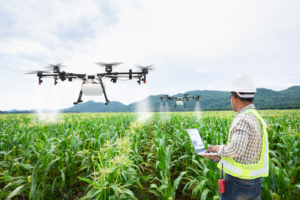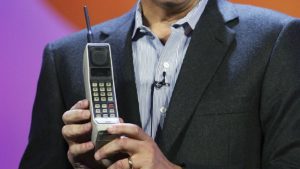IoT, Internet of Things is Big!
A Huge New Industry
IoT will be a US$1.1 Trillion industry in 2021, so big that we should find out more about it. There will be 50 Billion ‘Things’ by 2030, with 5G driving market growth.
While it is a strange title, ‘Things’ refer to anything that can be measured. By connecting these Things to WiFi and the internet, data can be analysed, systems improved or action taken. The big applications are in healthcare, industry and personal use. The Fitbit is a Thing.
A friend with a heart condition slipped while playing golf. I heard a voice say ‘Are you OK?’ If he didn’t answer, apparently the Thing (an Apple Watch Series 6) would call an ambulance with GPS indicating his location. He said he was OK and the Thing went back into its shell.
Sometimes it is easier to view a video to explain IoT. ‘One picture is worth a thousand words’, a statement accredited to advertising executive, Fred R. Barnard.
What do Things Monitor?
- Healthcare: IoT applications are transforming healthcare by facilitating treatments and improving overall care
- Connected appliances
- Smart home security systems
- Autonomous farming equipment.
- Wearable health monitors
- Smart factory equipment
- Wireless inventory trackers
- Ultra high speed wireless internet
- Biometric cybersecurity scanners
- Connected Cars, Autonomous Vehicles
Examples
IoT Controlled Irrigation for Crops :

Sensors measure soil moisture. Farmers could turn the irrigation system on or off, as needed. With an IoT system, the irrigation system automatically does this, based on moisture detected. Furthermore, if the irrigation system knows when it’s going to rain based on weather forecasts, it needn’t water the crops until needed later.
Other sensors like light, air quality, and temperature can be used by algorithms (software driven procedure or formula for solving problems) in the Cloud (huge data storage systems owned and leased out by Google, Amazon, etc.) to learn more. With thousands of farms all collecting information, these algorithms learn to optimise crop growth. AI (Artificial Intelligence) at work.
While not yet cost effective, vertical farming is ripe for IoT, as everything is controllable. Temperature, light and weather independent watering, requiring only about 5% of outdoor water use. See an earlier blog, Vertical Farming
Transforming Retail
RFID (Radio Frequency IDentity – cost can be just a few cents each) tags are fitted on shelves to monitor products and collect data. The readers scan products on both display and stock shelves. The system informs when items are incorrectly placed or when running low. It manages the inventory precisely at low cost. The RFID tags are connected to a reader that detects theft, reducing the costs of security personnel. In large stores, like Amazon’s, robots can replace stock during the night.
What happens to Worker’s jobs?
While the above would appear to dispense with human workers, statistics show that increasing automation and using robots create more jobs than they replace. The jobs are obviously different and require training, but they tend to eliminate repetitive drudgery from work. The unhealthy, long hours, harsh and boring conditions in 19th century Lancashire cotton mills being an example. The transition period is inevitable, but a negative however, if not managed appropriately.
Advantages of IoT to Us, the Consumer
IoT, automation, robots and AI all contribute to better quality, lower priced products. Automation learns to create perfect products and then repeatedly makes this perfected product ad Infinitum. While this may not seem evident, look at the prices and quality of today’s smart phones compared to the early brick like devices of the 80s which cost thousands of dollars.
The first mobile phone, the Motorola Dynatac was available in 1983. It cost US$3995, weighed 800 grams, with a battery life of 18 minutes. Boyle’s law at work to create improvements so far, more to come. A long term example is the cars we drive. When I was young they would break down regularly, but rarely now as better designs and quality have improved them enormously.

Electronic devices and many other robot manufactured goods are much cheaper. Where human labour is involved such as in hairdressing, eating out, car servicing, trades, etc., prices don’t come down. That’s why ‘Abundance’ created by automation, AI, robots, etc., will be the subject of a future blog! There are now Kiwibots delivering meals at a fraction the cost (typically 15%) of Uber Eats, etc.
Please provide feedback in comments below. In particular what subjects most interest you and those you wish to read about in future blogs.

4 Responses
Ab fab . Sadly or gladly I won’t be around to witness these changes .!! Think I might see the start.
A young man like you John! You will see it.
Brilliant composition of the subject Campbell thanks heaps.
Thoroughly enjoyed this blog and learnt heaps Cheers
Murray, while I think there is now an overwhelming majority consensus, I am interested to see if anyone disagrees. However, I try to report facts only